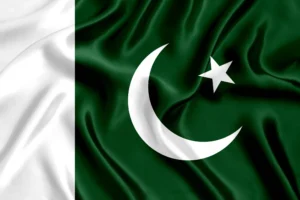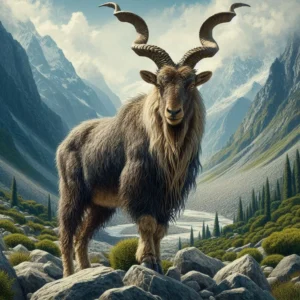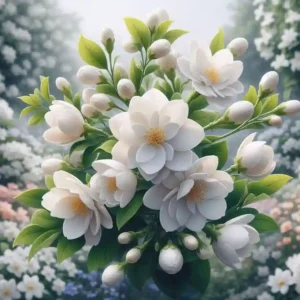Hello there, the seekers of the truth and the lovers of the culture!
Explore some of the fascinating facts about Pakistan National Symbols in this informative and motivational survey. Find out the history and meaning that is associated with each emblem. Come to swim as they taste the pride of a nation like has never before been seen! Have you ever thought about what drives Pakistan besides the taste buds tickling Biryanis and thrilling Cricket Matches? Fasten your seat belts, and let’s take a wild and crazy ride through the exciting topic of Pakistan’s National Symbols.
These aren’t mere symbols; these are the soul of Pakistan the essence of the country’s Identity. Be it the Markhor with the helix-like horns or the Jasmine flower which gives out an aura of smell, each of these symbols has an element of pride, history, and some weirdness. Ready to dive in? So, uncover the myths behind these symbols that are so colorful and enchanting about the Islamic Republic of Pakistan!
Pakistan
Pakistan officially known as the Islamic Republic of Pakistan is a country situated in South Asia. To the east, it borders India, while to the west it borders Afghanistan and Iran; towards the north, it is bordered by China; and to the south, it is bordered by the Arabian Sea. The county has a proven history of civilization that goes back for thousands of years with one of the oldest civilizations on earth, the Indus Valley Civilization.
- The estimated population of Pakistan is 245,602,378 based on Worldometer elaboration of the latest United Nations data.
- Pakistan takes the position of the 5th largest populated country/dependency in the world.
- According to Population Density, currently in Pakistan, it is estimated that 312 people live in per square Kilometer (808 per square mile).
- The total of the country and its lands if calculated is 770,880 Km2 (297,638 sq. miles).
- 34. 7 % of the total population is urban now, with 83,500,516 people in the year 2023.
- The current mean age of the population of Pakistan is estimated to be 20 years. 6 years.
- Punjabi 44.7%, Pashtun (Pathan) 15.4%, Sindhi 14.1%, Saraiki 8.4%, Muhajirs 7.6%, Baloch 3.6%, other 6.3%.
- According to the current situation, the inflation rate of Pakistan is 23 % from July 2024.
What is the Pakistan National Flag?


The design of the Pakistan national flag was created by Ameeruddin Kidwai. The national flag of Pakistan, adopted on August 14, 1947, features a simple yet striking design. It consists of a dark green field with a white vertical stripe on the hoist side. In the green field, there is the crescent moon which is white and a five-pointed star is also white.
The color green is associated with Muslims because a majority of Pakistan contains Muslims and green is also the traditional color of the Islamic countries. The White line on the flag symbolizes the religious minority in the country and the peace. The moon and star emblem represent Pakistan as an Islamic state – the symbol itself was established at the country’s inception.
What is the Pakistan National Anthem?
The official anthem of the country is called Qaumi Taranah meaning ‘National Anthem’ in English. The words of the song were penned by Hafeez Jalandhari that was a famous Pakistani poet and the composition by Ahmad Ghulamali Chagla. It later became officially adopted on August 14, 1954.
The words of this anthem are in Urdu language and touch the major topics like unity, faith, and patriotism. It focuses on the beauty of the land and other people’s commitment to their country.
What is the Pakistan National Language?
Urdu is the national language of the Pakistan country. Urdu was adopted as the official language to also embody Pakistani culture, as its literature includes civilization’s well-established history, and to enable regional ethnic groups to understand one another.
However, Urdu is not the first language of most Pakistan although it is the official language of Pakistan. Urdu acts as the main connecting language between these linguistic regions and unites people under the sense of nationalism.
What is the Pakistan National Sport?


The official sport of Pakistan is field hockey. Field hockey was introduced to Pakistan during the British colonial period and the team was established in 1948.
Pakistan is regarded as one of the most successful national field hockey teams with a total Hockey World Cup four times (1971, 1978, 1982,1994).
What is the Pakistan National Animal?


The National Animal of Pakistan is the Markhor. This is (goat) is wild and from the central Asian mountains; it easily stands out because of its large twisted horns. The Markhor, for instance, resides in the hilly region within the northern and the western areas; Khyber Pakhtunkhwa and Gilgit-Baltistan.
What is the Pakistan National Flower?


The Jasmine is Pakistan’s national flower; the white jasmine (Jasminum officinale) چنبیلی کا پھول to be precise. Otherwise commonly called the ‘soon’ in Pakistan, the jasmine flower represents both culture and symbolism in the country thanks to its other parts; however, it is famous for its small white flowers discoloring the roughage. It symbolizes the clean, beautiful, and simple and is known to have a good aroma.
Jasmine is also used in Pakistani traditional decorations, and in ceremonies, and therefore it is a part of the Pakistani floral and cultural treasure.
Who is the Pakistan National Poet?
Muhammad Allama Iqbal, born on the 9th of November, 1877 at Sialkot is considered the national poet, of Pakistan. Not only was Iqbal a philosopher and poet, but he was also a politician. He is honored for dreaming about the creation of a distinct Muslim nation, which culminated in the formation of Pakistan.
Allama Iqbal personally wrote the Persian and Urdu poems of the 1920s and 1930s that mainly focused on the individuals’ searches and enlightenment as well as the rebirth of the Islamic world. They include poetry works like ‘Bang-e-Dra’, ‘Asrar-e-Khudi’, ‘Payam-e-Mashriq’, etc. His poetic lines make Pakistanis feel pride, establish identity, and give them a purpose to live for.
Where is the Pakistan National Mausoleum?
Located in the city of Karachi in Pakistan the Pakistan National Mausoleum locally referred to as the Mazar-e-Quaid is noticeable and has great historical value. The Mausoleum is the tomb of Muhammad Ali Jinnah the father of the nation and commonly known as Quaid-e-Azam the Great Leader.
Mazar-e-Quaid often referred to as the Pakistan National Mausoleum was constructed between the years 1960 and 1970. It officially opened to the public in 1971. The structure has become a lasting memorial to Muhammad Ali Jinnah, the father of Pakistan and since then, it has assumed the stance of a pride and rallying point for the country.
Where is the Pakistan National Mosque?
The national mosque of Pakistan is the Faisal Mosque which is situated in the capital city of the country Islamabad. Currently stands as one of the biggest and most recognized mosques globally. The Faisal Mosque was designed by a Turkish Architect Vedat Dalokay, and it was completed in the year 1986.
It bears an interesting appearance; its construction is modern and untraditional compared to most mosques’ architecture. The style used in the construction of the mosque is Bedouin; it has a triangular shape for the prayer hall and four tall minarets. It has geometric designs and calligraphy professionally designed on it and is made of white marble combining modernity and tradition in the Islamic styles.
Where is the Pakistan National River?
This country’s hydrological system’s major river is the Indus River or the Sindhu River in Pakistan. The River Indus is one of the longest rivers on the planet, and it has played a very special role in the evolution of civilization in the territory of present-day Pakistan.
The speakers include the Indo-Gangetic River system which starts from the Tibetan plateau of China and flows through Pakistan and the Indus River system which starts from the same plateau as the former before draining Pakistan and emptying into the Arabian Sea. Stretching approximately 1980 miles, the Indus River flows every type of terrain from the northernmost region of Pakistan to the southern region which includes the mountainous region of Balakot, the fruitful regions of Punjab and Sindh, and even desert regions of the Thar desert.
Who is Pakistan’s National Hero?
The national hero of Pakistan is Muhammad Ali Jinnah, also known as Quaid-E-Azam meaning ‘The Great Leader’ Jinnah is regarded as the father of Pakistan as he played a huge role in the formation of an independent state for the Muslims of the subcontinent.
Muhammad Ali Jinnah was born on December 25, 1876, in Karachi then a part of British India. He went to Lincoln’s Inn to study law and after completing his studies he returned to India where he established himself as a competent barrister. This, together with his legal practice, and his intelligence placed him in the world of politics.
Which is the Pakistan National Day?
The national day of Pakistan is Pakistan Day. Manzoor Chaudhry, the Pakistan ambassador says that Pakistan National Day is celebrated every year to recall the events on March 23, 1940, when Muslims of the Indian sub-Continental staged a call for a separate Muslim homeland at Lahore. On this day, people celebrate the Lahore resolution of 1940 and the thought process of the first constitution of Pakistan in 1956 that made Pakistan the first Islamic Republic of the world.
Pakistan National Mountain
The highest mountain in Pakistan is the ‘K2’ or ‘Mount Godwin-Austen’ is often considered as the national mountain of the country. It is the highest peak of the Himalayas and the second-highest mountain in the world with an altitude of 8,611 meters (28,251 feet).
K2 is located in the Karakoram range that traverses through Pakistan, the Indian-administered Kashmir, and the Chinese territory of Sinkiang. It lies in the province of Gilgit Baltistan in the northern areas of Pakistan on the border with China. The mountain is famous for its challenging climbing features; thus, it is referred to as the Savage Mountain because of the climbing’s technicality and mortality rate.



